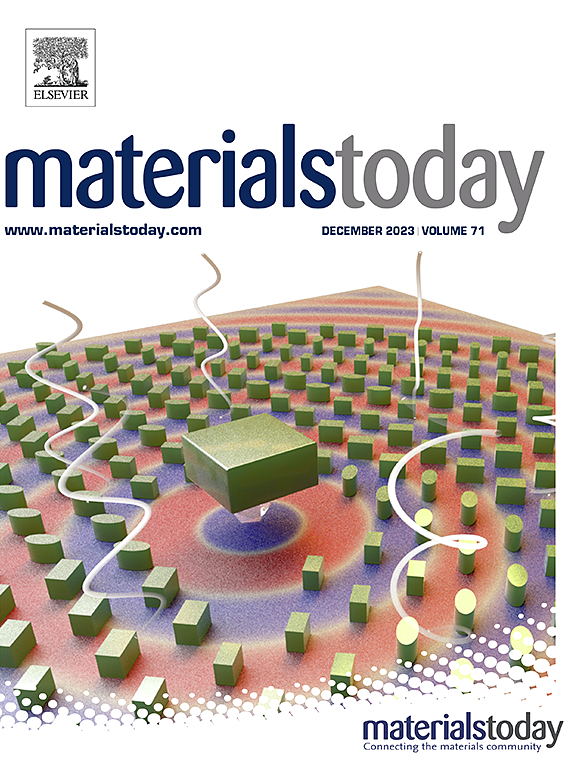Enabling 3D printability and vascular morphogenesis with double network dynamic hydrogels
IF 21.1
1区 材料科学
Q1 MATERIALS SCIENCE, MULTIDISCIPLINARY
引用次数: 0
Abstract
Hydrogels are crucial biomaterial candidates for tissue engineering and biofabrication applications. The matrix dynamics of hydrogels have recently been demonstrated to contribute to vascular morphogenesis, which is significant for tissue vascularization. However, such dynamic hydrogels are usually mechanically non-stable during culture due to bonding dissociation and cell-mediated degradation, which hinder their usage in advanced biofabricaiton technologies, such as 3D bioprinting. Here, we introduce a double-network dynamic hydrogel (DNDH) bioink strategy to integrate the structural printability, stability, and induction of vascular morphogenesis. Specifically, we synthesize a gelatin-based bioink that is composed of a hydrazone crosslinked dynamic hydrogel network and a methacrylate crosslinked non-dynamic hydrogel network. We demonstrate that our optimized DNDH formulation can be 3D printed into customized structures while retaining structural stability for weeks. Moreover, the DNDH exhibits matrix dynamics with a much shorter stress relaxation time than the non-dynamic counterpart, which is demonstrated to trigger vascular morphogenesis through cell-matrix interactions in a stiffness-independent way. The inclusion of biochemical cues in the matrix and co-culture with supporting cells further enhances the formation of vascular networks and confirms the advantages of DNDH over its non-dynamic counterpart. The in vivo studies further confirm the importance of matrix dynamics in vascularization promotion. Our work provides a generalizable and easy-to-use approach to introduce matrix dynamics to bioinks, which could expand the capability of dynamic hydrogels in biofabrication scenarios.

求助全文
约1分钟内获得全文
求助全文
来源期刊

Materials Today
工程技术-材料科学:综合
CiteScore
36.30
自引率
1.20%
发文量
237
审稿时长
23 days
期刊介绍:
Materials Today is the leading journal in the Materials Today family, focusing on the latest and most impactful work in the materials science community. With a reputation for excellence in news and reviews, the journal has now expanded its coverage to include original research and aims to be at the forefront of the field.
We welcome comprehensive articles, short communications, and review articles from established leaders in the rapidly evolving fields of materials science and related disciplines. We strive to provide authors with rigorous peer review, fast publication, and maximum exposure for their work. While we only accept the most significant manuscripts, our speedy evaluation process ensures that there are no unnecessary publication delays.
 求助内容:
求助内容: 应助结果提醒方式:
应助结果提醒方式:


